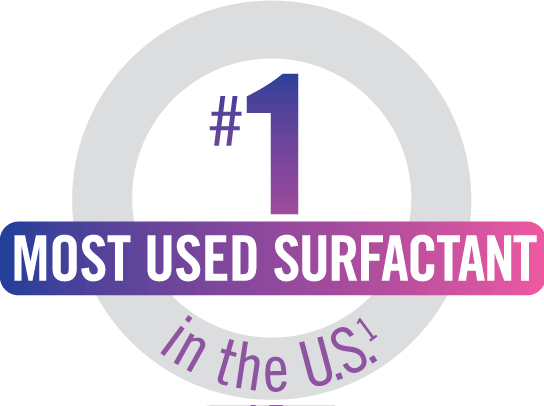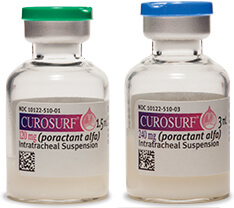When treating premature infants for Respiratory Distress Syndrome (RDS)
THE #1 MOST USED SURFACTANT1*

WHY CHOOSE CUROSURF FOR YOUR NICU?
‡Not established to result in superior safety or efficacy.
Why and when to consider early rescue


CUROSURF® (poractant alfa) is intended for intratracheal use only. The administration of exogenous surfactants, including CUROSURF, can rapidly affect oxygenation and lung compliance. Therefore, infants receiving CUROSURF should receive frequent clinical and laboratory assessments so that oxygen and ventilatory support can be modified to respond to respiratory changes.
CUROSURF should only be administered by those trained and experienced in the care, resuscitation, and stabilization of preterm infants.
Transient adverse reactions associated with administration of CUROSURF include bradycardia, hypotension, endotracheal tube blockage, and oxygen desaturation. These events require stopping CUROSURF administration and taking appropriate measures to alleviate the condition. After the patient is stable, dosing may proceed with appropriate monitoring.
Pulmonary hemorrhage, a known complication of premature birth and very low birth-weight, has been reported with CUROSURF. The rates of common complications of prematurity observed in a multicenter single-dose study that enrolled infants 700–2000 g birth weight with RDS requiring mechanical ventilation and FiO2 ≥ 0.60 are as follows for CUROSURF 2.5 mL/kg (200 mg/kg) (n=78) and control (n=66; no surfactant) respectively: acquired pneumonia (17% vs. 21%), acquired septicemia (14% vs. 18%), bronchopulmonary dysplasia (18% vs. 22%), intracranial hemorrhage (51% vs. 64%), patent ductus arteriosus (60% vs. 48%), pneumothorax (21% vs. 36%) and pulmonary interstitial emphysema (21% vs. 38%).
CUROSURF® (poractant alfa) Intratracheal Suspension is indicated for the rescue treatment of Respiratory Distress Syndrome (RDS) in premature infants. CUROSURF reduces mortality and pneumothoraces associated with RDS.
References: 1. IQVIA Global Market Share, Total Year 2018. 2. Data on file, Chiesi Farmaceutici S.p.A. and Chiesi USA, Inc. 3. Speer CP, Gefeller O, Groneck P, et al. Arch Dis Child. 1995;72:F8-F13. 4. Collaborative European Multicenter Study Group. Pediatrics. 1988;82:683-691. 5. Ramanathan R, Rasmussen MR, Gerstmann DR, Finer N, Sekar K; and the North American Study Group. Am J Perinatol. 2004;21:109-119. 6. Verder H, Albertsen P, Ebbesen F, et al. Pediatrics. 1999;103:1-6. 7. Gerdes JS, Seiberlich W, Sivieri EM, et al. J Pediatr Pharmacol Ther. 2006;11:92-100. 8. Nanda D, Nangia S, Thukral A, et al. Eur J Pediatr. 2020;179(4):603-610. 9. Tian T, Wang L, Ye R, et al. Pregnancy Hypertens. 2020;19:131-137.

